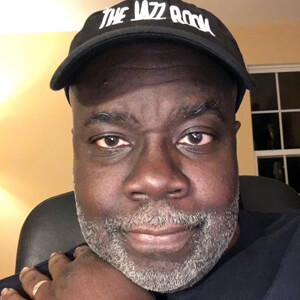Unsung Women of Jazz – Mary Osborne
Mary Osborne (1921 – 1992)
“The only electric guitar I knew of was the Hawaiian guitar, I’d listen to all the jazz guitarists of the time, but they all played acoustic. But here was Charlie Christian playing Django Reinhardt’s ‘St. Louis Blues’ note for note but with an electric guitar. It was the most startling thing I’d ever heard.” – Mary Osborne
When I began this series, I only chose nine women. Because I knew that somewhere along the way, there would be a talented woman whom I had overlooked, that needed to be on this list. Well, surprise! I found not one, but two. The first, profiled here, is guitarist Mary Osborne. The second is…well, you’ll find out in the next post.
Born into a musical family in Minot, ND; Mary’s direction was set from an early age. “We had a very large family and everybody could play an instrument, but nobody intended to be a musician.” Mary said in a 1991 New York Times interview. “They tell me that one time they found me sitting at the piano picking out tunes. I was 2 or 3 or something. My dad says ‘I think I finally got myself a musician.’ From then on he just doted on me, he brought me every string instrument.” Ms. Osborne tried the mandolin and the banjo, before settling on the guitar at age 9. As a teenager, she played her acoustic guitar on local radio broadcasts, for which she was paid in Hershey Bars.
At 17, her life was changed when pianist Al Trent came to Bismark, ND, on a one-nite stand. Trent’s electric guitarist was a gifted young man named Charlie Christian. The next day, Mary bought herself an electric guitar and became a devoted follower of Christian’s. And Christian, impressed by their mutual love of Django Reinhardt, took the time to mentor Mary.
In the late ’30’s Ms. Osborne moved to Pittsburgh and then to New York. Though she encountered barriers due to her sex, her talents were too good to be completely ignored. Eventually, Mary landed a gig with legendary violinist Joe Venuti, (who considered her a replacement for his late partner Eddie Lang) which then led to work and recordings with Coleman Hawkins, Mary Lou Williams, Ben Webster, Dizzy Gillespie and much to her chagrin, many bookings as part of gimmicky all-girl groups. Her love though, was joining in the late night jams at the famed clubs along 52nd Street. She was quite a sight, this pretty, petite white girl, up on the stand and more than holding her own with some of the best jazzmen of all time.
Around that same time, Mary met her husband, trumpeter Ralph Scaffidi. They remained in New York and Mary kept working, leading her own trio, which played many NYC hotels and appearing often on radio and in this upstart new medium, television. She also gave birth to three children, between 1955 and 1959. While pregnant with her third child, she recorded the first of her two albums, A Girl and Her Guitar. Despite the corny title, this was no novelty record. Mary swung hard, cool and fast, leading a group that included pianist Tommy Flanagan, bassist Tommy Potter and drummer “Papa” Jo Jones.
[From Cats vs. Chicks, Mary trades licks with the great Tal Farlow on “Anything You Can Do…”]
During the ’60’s, Mary Osborne continued to work on the NY scene. She even refined her skills by taking classical guitar lessons. In 1968, Mary and Ralph decided to move to Bakersfield, CA, where they started a successful company that made guitars and amplifiers. She continued to perform locally and she taught at Cal State University in Bakersfield. She would surface occasionally for recordings and higher profile gigs. In 1977 she appeared on Marian McPartland’s album Now’s The Time, which featured an all female group that included another of our Unsung Women, Vi Redd. in 1981, Stash Records released Now and Then, which was split between freshly recorded trio tracks and some cuts from A Girl and Her Guitar. The ’81 tracks proved that Mary had not lost a step over the years; in fact her sound had matured into something that was less Charlie Christian and more uniquely hers.
In 1990, she joined Lionel Hampton for a set during the Playboy Jazz Festival. By all accounts, the 69-year-old Osborne stole the show (I tried desperately to find some video or audio footage, but no luck). This led to her coming back to New York for a week at the Village Vanguard in 1991. Sadly, it would be her last New York gig. Mary Osborne died of cancer in 1992.
When I conceived this series, this spot in the order was to be filled by Emily Remler. Though we will still touch on Ms. Remler at a later date, I find it ironic that we are instead speaking of a woman who made Emily possible. Mary Osborne was a true pioneer.
Recommended Recordings:
- A Girl and Her Guitar (Warwick) – LP OOP and very rare
- Now and Then (Stash) – CD and LP OOP and rare (Note – The CD version was released after her death and is titled A Memorial)
- Now’s The Time [Marian McPartland] (Halcyon records) – CD and LP OOP and rare
- Swing to Bop Guitar: Guitars in Flight 1939 – 1947 [A compilation that includes 3 tracks from the Mary Osborne Trio] (Hep Records) – CD and mp3 in print
About the Author
Curtis Davenport
Curtis is a jazz historian, blogger and veteran radio personality. He currently produces the popular blog, CurtJazz.com and the web-based radio station, CurtJazz Radio.
Follow Curtis on his website, Curt's Jazz Cafe, CurtJazz Radio, Facebook and Twitter.
